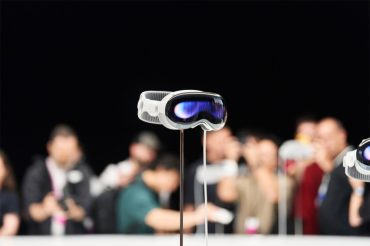
- Health Tech
- Healthcare
Apple Partners with Synchron to Enable Brain-Controlled Device Access for Disabled Users
3 minute read

Pioneering Neural Device Control: Apple and Synchron’s Brain-Interface Technology Empowers Mobility-Impaired Users Through Stentrode System
Key Facts
- Apple partners with Synchron to enable device control through brain signals via the Stentrode implant, featuring 16 electrodes
- Ten patients have received Stentrode implants since 2019 under FDA’s investigational device exemption
- Apple plans to integrate BCI support into its Switch Control accessibility framework by 2025
Introduction
Apple’s groundbreaking partnership with brain-computer interface company Synchron transforms how users with severe motor impairments interact with technology. The collaboration, first reported by Fast Company, enables direct neural control of Apple devices through Synchron’s innovative Stentrode implant.
Key Developments
Synchron’s Stentrode technology uses electrodes implanted via the jugular vein to read brain activity from the motor cortex. The system translates neural signals into digital commands, allowing users to control iPhones, iPads, and the Apple Vision Pro through thought alone. One test participant with ALS has already demonstrated successful device control, though at a slower pace than conventional methods.
Market Impact
This initiative positions Apple as a pioneer in accessibility technology, similar to its previous innovations with the “Made for iPhone” hearing aid protocol. The company’s BCI Human Interface Device profile establishes neural interfaces as a native input category, potentially setting a new industry standard for brain-computer interface integration.
Strategic Insights
The partnership targets tens of thousands of individuals with severe motor impairments, offering them newfound independence in device interaction. Apple’s approach focuses on establishing standardized protocols for BCI integration, preparing for future developments from other companies like Neuralink.
Expert Opinions and Data
Synchron CEO Tom Oxley emphasizes the significance of this development: “Apple is helping to pioneer a new interface paradigm, where brain signals are formally recognized alongside touch, voice, and typing.” Kurt Haggstrom, Synchron’s chief commercial officer, notes that clinical trial participants consistently prioritize communication and creativity through Apple devices.
The technology enables bidirectional communication between BCI and device, creating a closed-loop system that optimizes decoding accuracy and user experience. This advancement represents a significant step toward a unified ecosystem for neural interaction across technology platforms.
Closing Summary
Apple’s collaboration with Synchron marks a significant advancement in accessibility technology, establishing new standards for brain-computer interfaces in consumer devices. While FDA approval and mainstream availability remain years away, initial trials demonstrate promising results for users with severe motor impairments.








